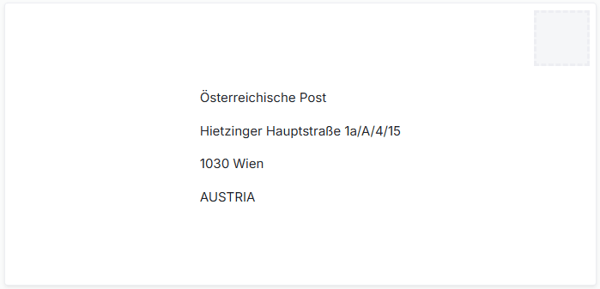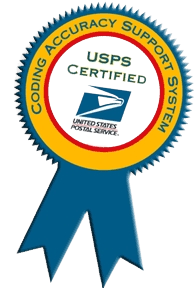This guide provides a comprehensive overview of Austrian address formatting, postal code structures, and localization practices. It includes information on postal services, languages, time zones, and address validation standards across Austria.
Address Format
Structure for standardized Austrian postal addresses.
- Organization
- Department/Contact
- Thoroughfare PremisesNumber/SubBuilding/
- SubPremisesLevel/SubPremises
- PostalCode Locality
- Country
Address Verification Data
Austrian postal addresses verification data.
| Available: | Yes |
| Does the country use Postal Codes: | Yes |
| PO Box Indicator: | Postfach, Postlagernd |
| ISO-2-Code: | AT |
| ISO-3-Code: | AUT |
| Phonecode: | 43 |
Address Example
Example of standardized Austrian postal addresses.

Country Info
Full Country Name: Republic of Austria (Republik Österreich)
| Country Alpha-2 code | AT |
|---|---|
| Country Alpha-3 code | AUT |
| Numeric Code | 040 |
Timezone
Austria Time Zone Details
| Time Zone | UTC | DST |
|---|---|---|
| Central European Time (CET): | UTC+1 | UTC+2 |
Official Language
The official language is German, with Hungarian, Slovene, and Croatian recognized as minority languages in specific regions.
Fun Fact
- Austria is landlocked in Central Europe; it has no coastline. (CIA)
- The area is ~83,871 km². Its territory is sized somewhat like South Carolina, or about two-thirds the size of Pennsylvania. (CIA)
- Bordered by eight countries: Germany, Czech Republic, Slovakia, Hungary, Slovenia, Italy, Switzerland, and Liechtenstein. (CIA)
- Life expectancy is quite high: as of 2024, it's about 82 years. (CIA)
- Austria has a low fertility rate, well below replacement, which means natural population growth is minimal. Population change depends heavily on migration. (CIA)
- German is the predominant language. Austria is culturally rich, famous for contributions in classical music, arts, architecture (Vienna especially), and alpine tourism.
- Austria declared “perpetual neutrality” in 1955. The country is officially neutral (though it participates in many international organizations). (CIA)
Postal Authority
The Österreichische Post AG (Austrian Post) is Austria’s national postal service. It provides domestic and international mail and parcel delivery, logistics solutions, and digital services, maintaining an extensive post office network across all federal states.
Reference: https://www.post.at
Postal Data & Certification
Austria Post has two official versions of their postal address data.
Address Data S – Includes all postal addresses with house number and a flag to if Türnummer, which is the door number to apartments in multi-unit buildings, is required.
Address Data L – Includes the information in Address Data S but also includes the possible Türnummer, Household ID, Household Type, and Household Status.
Melissa uses the Address Data S data set to validate both the house number and the Stiege number of the address.
Name Conventions
Population Names
In Austria, names follow the Western naming convention and are regulated by national civil law. The typical structure includes a given name followed by a family name. Naming laws are enforced by local registry offices and overseen by federal regulations, which ensure that names are not offensive, misleading, or inappropriate.
Austria allows for the inclusion of one or more given names and supports characters with diacritics, such as ä, ö, ü, and ß. Traditionally, children receive the father’s surname, but since legal reforms, parents may choose to give the mother’s surname or a hyphenated combination.
Titles are highly valued in Austria and often used in formal address. Academic and professional titles (e.g., Mag., Dr., Prof.) are legally recognized and frequently appear in official documents and correspondence.
[opt: title] [given name] [opt: middle name(s)] [FAMILY NAME]
Examples:
- Herr Dr. Markus Huber
- Frau Anna-Maria Müller
- Prof. Lukas Steiner
- Mag. Julia Weiß
Organizational Names:
Austrian companies must be registered with the Firmenbuch (Company Register) and must include a legal entity designation. Common examples include:
- GmbH (Gesellschaft mit beschränkter Haftung) – limited liability company
- AG (Aktiengesellschaft) – public stock corporation
- OG / KG / Verein / Privatstiftung – partnerships, associations, or private foundations
The business name must be unique, clearly reflect the type of entity, and must not be misleading or contrary to public order.










